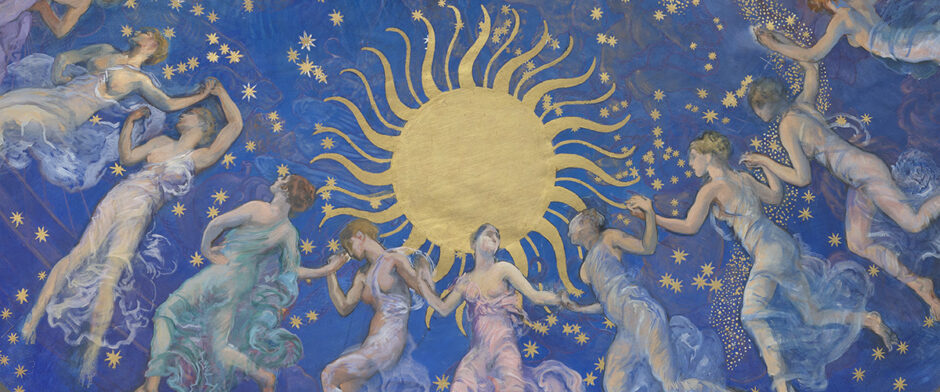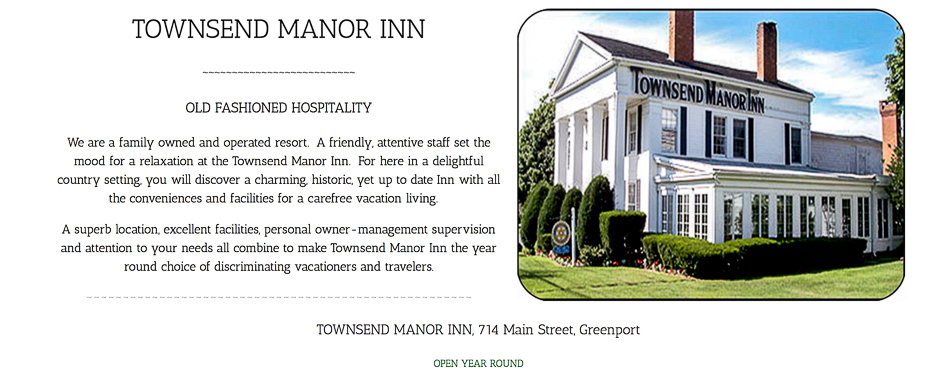The Dance of Life: Figure and Imagination
in American Art, 1876–1917
——————–
Edwin Austin Abbey, Study for The Hours in the Pennsylvania State Capitol, ca. 1909–11. Oil on canvas. Yale University Art Gallery, Edwin Austin Abbey Memorial Collection, 1937.1716
———————————————-
The first major exhibition to examine the vitality and expressivity of the human figure in working studies for public art of the American Renaissance, a pivotal period in American art

September 6, 2024–January 5, 2025
 The Yale University Art Gallery is pleased to present The Dance of Life: Figure and Imagination in American Art, 1876–1917, featuring more than one hundred artists’ studies created for large commissions at civic institutions nationwide. From precise pencil drawings and sensuous pastels to dynamic bronzes and virtuosic oil paintings, these expressions of energy and vitality reveal dramatically different approaches to the creative process and present the clearest and most direct manifestation of the artists’ ideas.
The Yale University Art Gallery is pleased to present The Dance of Life: Figure and Imagination in American Art, 1876–1917, featuring more than one hundred artists’ studies created for large commissions at civic institutions nationwide. From precise pencil drawings and sensuous pastels to dynamic bronzes and virtuosic oil paintings, these expressions of energy and vitality reveal dramatically different approaches to the creative process and present the clearest and most direct manifestation of the artists’ ideas.
Among the well-known figures highlighted in the exhibition are Edwin Austin Abbey, Edwin Blashfield, Daniel Chester French, Violet Oakley, Augustus Saint-Gaudens, and John Singer Sargent—leading artists of the period—as well as underrecognized talents such as Meta Warrick Fuller, Evelyn Longman, and Gari Melchers. Turning away from the death and destruction of the Civil War, these and other artists embraced life as their subject. In preparatory studies for commissions destined to fill a wave of new public spaces—libraries, universities, courthouses, museums, state capitols, train stations, and parks—the artists used the human figure to communicate with their audiences about community, memory, and identity.
—————————
“Even today, these artists’ visions shape Americans’ understanding of our shared public spaces,” said Mark D. Mitchell, Holcombe T. Green Curator of American Paintings and Sculpture at the Gallery and organizer of the exhibition. “The men and women who completed these works practiced in busy studios with models, apprentices, guests, and other artists coming and going. They lived in a sociable age, in which membership in organizations and clubs helped them gain commissions and provided venues to seek advice and ideas. They were in constant communication with one another, offering and receiving support for their work.”
—————————
Anchoring the exhibition are two celebrated landmarks—the Boston Public Library and the Pennsylvania State Capitol in Harrisburg. Each site encompasses commissions by multiple painters and sculptors, reflecting the constant interactions among artists and their need to create art in harmony with one another. Both buildings share mural programs by Edwin Austin Abbey (1852–1911, HON. 1897), whose estate of three thousand artworks came to the Gallery in 1937 and provided the foundation for the exhibition. Abbey was famous in his day, one of several connective figures who enabled a new generation to find success in mural painting and public sculpture. Complementing objects from the Gallery’s holdings are loans of rarely seen artworks from the collections of the Art Institute of Chicago, Harvard University Art Museums, the Metropolitan Museum of Art, Museum of Fine Arts Boston, and National Gallery of Art.
In addition to highlighting two key civic institutions of the era, the exhibition explores a wide range of subjects across its thematic sections. “A Renaissance in America” ties the origins of the era to the development of Trinity Church in Boston, inspiration in the shared concerns of the Italian Renaissance, and legacy of the Civil War. “Reaching Out,” “Vital Energy,” “Light,” and “Expression” consider some of the tools and strategies that artists used to depict human experience and engage viewers, while “Role Models” traces the remarkable diversity of professional artist’s models during the period. The influence of modern dance and allegorical representations of modernity are addressed in “Dance” and “Modern,” respectively. The exhibition concludes with Abbey’s spectacular oil painting The Hours, a half-scale study for the monumental ceiling in the House of Representatives Chamber in the Pennsylvania State Capitol that has been painstakingly conserved and will be exhibited for the first time.
Despite revolutionary technological changes during this period, people—not machines—still crafted, constructed, mined, and forged products by hand. In their murals and sculptures, artists focused on the human form, using it to project the ideals of the age: the power of democracy over autocracy, of innovation over stagnation, of a stable and vibrant future over a stormy and divided past. The Dance of Life presents the artists’ visions in formation, as their ideas took flight.
Exhibition Credits
Exhibition and publication made possible by Jerald Dillon Fessenden, B.A. 1960; Clifford Ross, B.A. 1974; the Henry Luce Foundation; the Mr. and Mrs. Raymond J. Horowitz Foundation for the Arts, Inc.; the Wyeth Foundation for American Art; the Rosalee and David McCullough Fund; the Eugénie Prendergast Fund for American Art, given by Jan and Warren Adelson; the Mr. and Mrs. Raymond J. Horowitz Foundation for the Arts Fund; and the Friends of American Arts at Yale Exhibition and Publication Endowment Funds. Organized by Mark D. Mitchell, the Holcombe T. Green Curator of American Paintings and Sculpture.
————————-
=======================================================
AAQ / Resource: Townsend Manor Inn
Old Fashioned Hospitality
====================================================

AAQ / Resource: Riverhead Bay Motors
______________________________________________________________________


